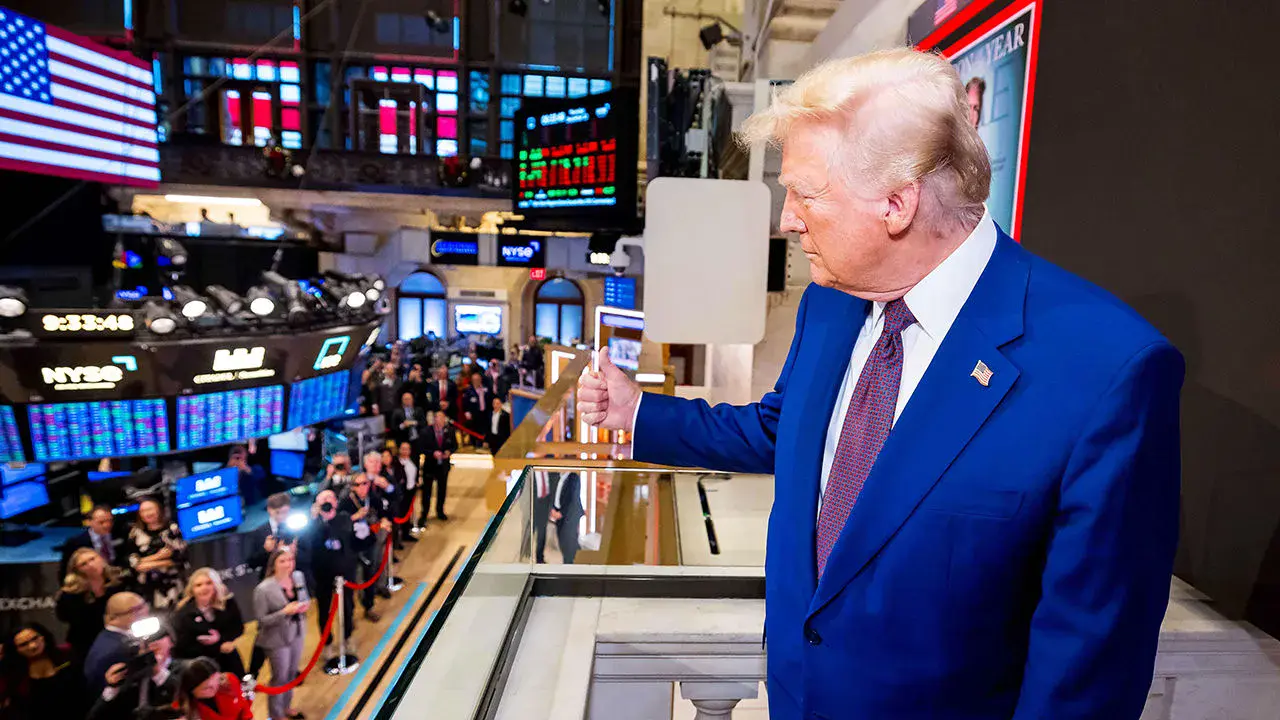Decoding the Downturn: An In-Depth Analysis of the US Stock Market Fall
Introduction: The Pulse of Economic Health
The US stock market serves as a vital indicator of economic health and investor confidence, reflecting the collective sentiment of millions of participants. Recent volatility, marked by staggering losses, has sparked widespread concern. From the Trump era’s policy-driven turbulence to the tech sector’s vulnerability, the market’s fluctuations reveal a complex interplay of factors. This analysis delves into the underlying causes, consequences, and implications of these downturns, offering insights into the forces shaping the financial landscape.
The Trump Era: Policy Shifts and Market Reactions
The presidency of Donald Trump introduced a period of heightened volatility, characterized by bold policy decisions that alternately fueled optimism and anxiety. One of the most significant triggers was the imposition of new tariffs, designed to protect domestic industries and renegotiate trade deals. However, these measures often had unintended consequences, sparking fears of economic downturns and trade wars. The market’s reaction was swift and severe, with one notable event resulting in a $4 trillion loss in value. This underscores the delicate balance between protectionist policies and market stability.
Personnel decisions within the administration also contributed to market unease. The firing of a top statistician over a jobs report dispute, for instance, raised questions about the credibility and independence of government data. This incident coincided with a $1.1 trillion loss in the US stock market, highlighting the importance of transparency and trust in maintaining investor confidence. The market’s sensitivity to such events demonstrates the interconnectedness of political decisions and financial outcomes.
The DeepSeek AI App: A Global Tech Disruption
The emergence of China’s DeepSeek AI app provides a stark example of how technological advancements can trigger market turbulence. The app’s perceived threat to established US tech giants led to a rapid sell-off, erasing over $1 trillion in market capitalization. This event underscores the global nature of the tech sector and its vulnerability to disruptive innovations. The market’s reaction reflects broader concerns about competition, regulatory oversight, and the pace of technological change.
The DeepSeek AI app’s impact on major tech stocks like Nvidia highlights the concentration of value within a few key players. As artificial intelligence continues to evolve, companies and governments must navigate the challenges and opportunities it presents responsibly. Ensuring fair competition and minimizing market disruptions will be crucial in maintaining long-term stability.
The Magnificent Seven: Market Concentration and Risk
The “Magnificent Seven” – Apple, Microsoft, Amazon, Alphabet (Google), Nvidia, Tesla, and Meta (Facebook) – have become dominant forces in the US stock market. These companies account for a substantial portion of the market’s total value, making their performance critical to overall stability. A single trading session saw the market lose $1.1 trillion in value, with the Magnificent Seven alone accounting for over $750 billion of that loss. This concentration of value presents a significant risk, as any downturn in these large-cap stocks can have a disproportionate impact on the broader market.
The reliance on a few key players underscores the importance of diversification and risk management. Investors must be aware of the potential for concentration risk and take steps to mitigate its effects. Diversifying portfolios and maintaining a long-term perspective can help navigate the uncertainties associated with market concentration.
Macroeconomic Factors: Interest Rates, Inflation, and Geopolitical Instability
Broader macroeconomic factors play a pivotal role in shaping stock market trends. Interest rate hikes, inflation concerns, and geopolitical instability can create uncertainty and volatility. The Federal Reserve’s decisions regarding interest rates, for example, have a significant impact on investor sentiment and borrowing costs, influencing stock valuations. Rising interest rates can make borrowing more expensive, potentially dampening economic growth and reducing corporate profits.
Inflation concerns also contribute to market volatility. Rising prices erode purchasing power and can lead to higher interest rates, further pressuring stock valuations. Geopolitical instability, such as trade disputes or conflicts, can disrupt supply chains and create uncertainty, leading to market sell-offs. The stability of portfolio flows since the reforms of March 2024, even in the face of significant external shocks, highlights the importance of sound economic policies and regulatory frameworks in mitigating these risks.
Investor Sentiment: The Psychology of Market Movements
Investor sentiment and market psychology are powerful forces driving stock market movements. Fear, greed, and herd behavior can amplify market swings, leading to both booms and busts. During periods of uncertainty or market decline, investors may panic and sell off their holdings, further exacerbating the downward trend. Conversely, during periods of optimism, investors may become overly enthusiastic and drive stock prices to unsustainable levels.
Understanding investor sentiment is essential for navigating market volatility. Investors should avoid emotional reactions and instead rely on sound analysis and long-term strategies. Diversifying portfolios and maintaining a disciplined approach can help mitigate the impact of market psychology on investment decisions.
The Rise of Bitcoin: A New Dynamic in the Financial Landscape
While not directly related to the traditional stock market, the rise of Bitcoin and other cryptocurrencies has introduced a new dynamic to the financial landscape. The increasing popularity and acceptance of Bitcoin as an alternative asset class have the potential to influence investor behavior and capital flows. Although there is no direct correlation, the growing interest in cryptocurrencies highlights the evolving nature of the financial system.
Further research on Bitcoin policy and its macroeconomic implications is needed to fully understand its potential impact on the stock market and broader economy. As cryptocurrencies continue to gain traction, their role in the financial ecosystem will become increasingly significant.
Conclusion: Navigating the Uncertainties
The US stock market’s recent falls, marked by trillions of dollars in value erosion, underscore the complex and interconnected nature of the global financial system. Factors ranging from trade policies and personnel decisions to technological disruptions and macroeconomic trends can all contribute to market volatility. As investors navigate these uncertainties, it is crucial to maintain a long-term perspective, diversify their portfolios, and avoid making impulsive decisions based on short-term market fluctuations.
Understanding the underlying drivers of market movements and adopting a disciplined approach to investing can help mitigate risk and achieve long-term financial goals. By carefully analyzing the factors that contribute to market downturns and remaining informed about the evolving economic landscape, investors can navigate the uncertainties and capitalize on opportunities in the ever-changing world of finance. The key to success lies in balancing caution with opportunity, ensuring a resilient and adaptive investment strategy.





